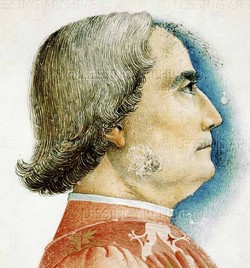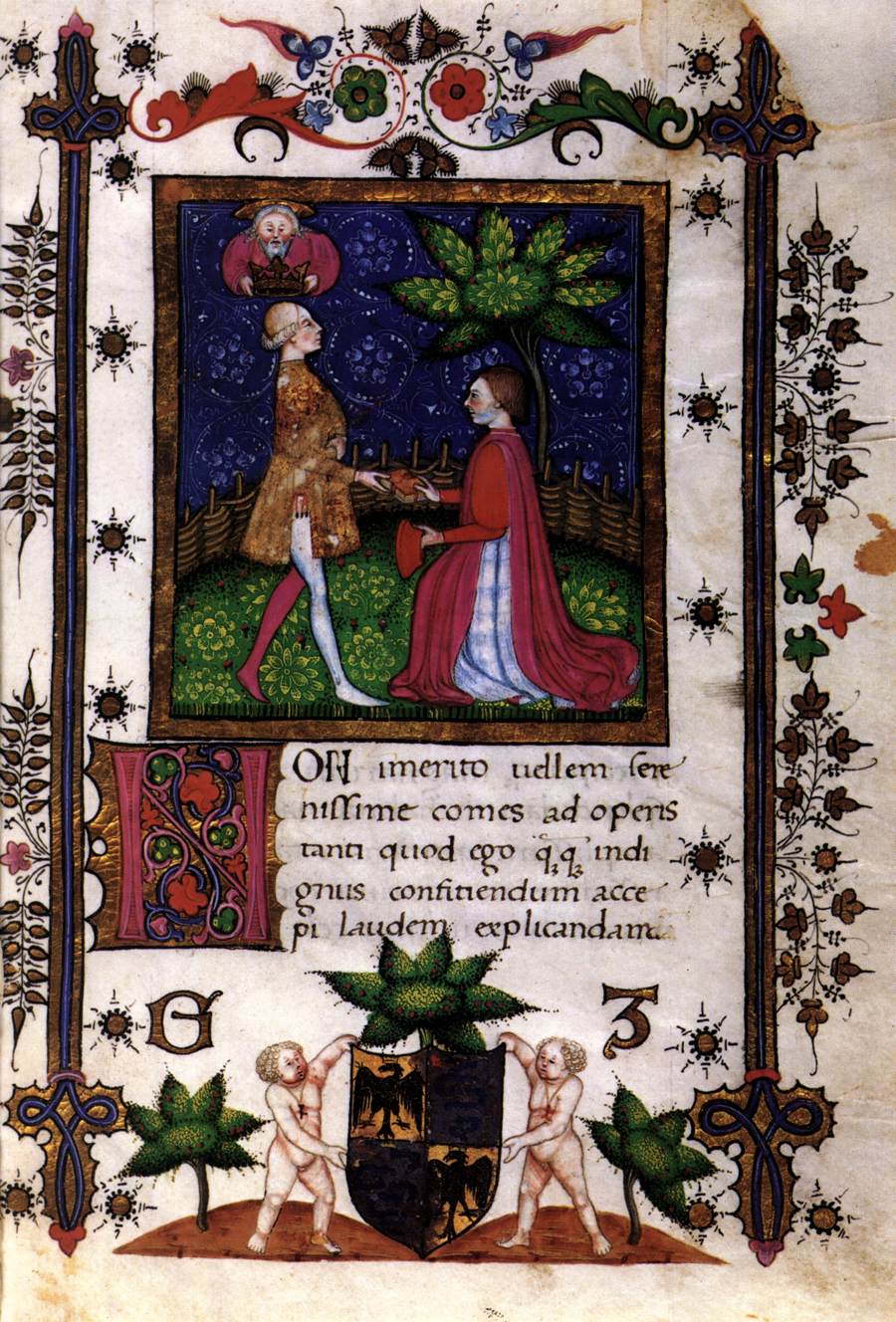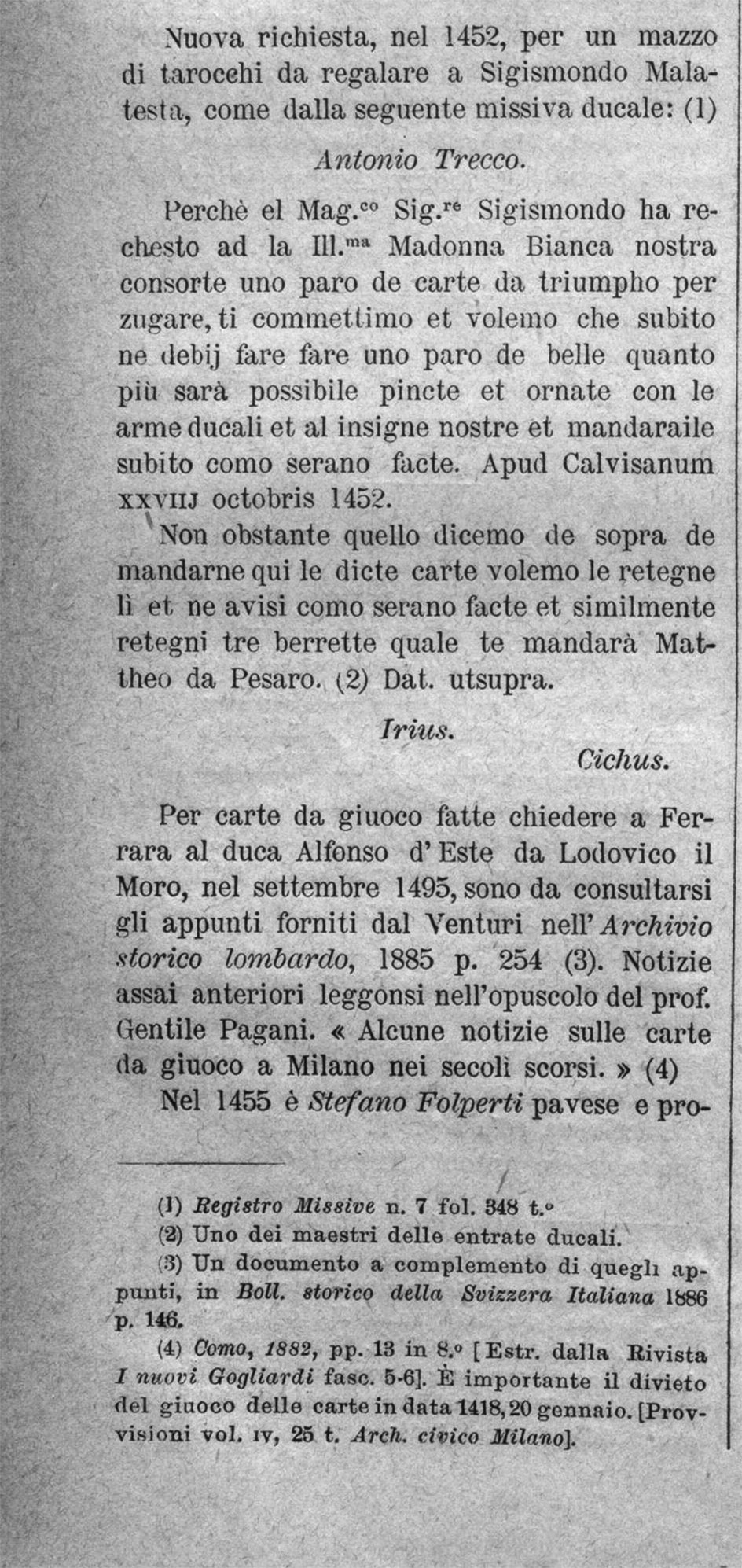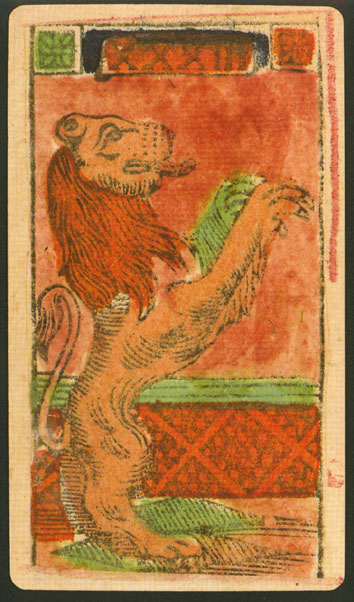Re: Francesco Filelfo: the "Odes" (early 1450s)
Posted: 20 Oct 2013, 05:55
Ciriaco de' Pizzicolli or Cyriacus of Ancona (31 July 1391 — 1453/55) ....
... "He retired to Cremona, where he lived so quietly that the year of his death is not certain."
http://en.wikipedia.org/wiki/Ciriaco_de%27_Pizzicolli
Cyriaco commented the Muses productions in Ferrara, and mentioned ...
Murray Menzies, a researcher active with us around 2004/2005, had a favor for the idea, that Parrasio had been the author of the Mantegna Tarocchi.
A part of Ciriaco's collections and writings seems to have been lost in Alessandro Sforza's library ...
"... the Commentarii were lost in the 1514 fire of the library of Alessandro and Costanza Sforza in Pesaro".
(Italian wikipedia to Ciriaco: "Il manoscritto dei Commentaria di Ciriaco non è perduto")
Another part was lost in Ancona.
"A series of Pizzicolli's manuscripts about Ancona was destroyed during a fire of the city's archives in 1532"
As Ancona is close to Pesaro, and Cyriaco came from there, one likely has to assume, that the Commentarii in the possession of Alessandro Sforza likely has nothing to do with his stay in Cremona (?).
Italian Wikipedia to the death: "Incerta è la data di morte. Una volta si pensava al 1452 ma la sua presenza nella capitale bizantina appena conquistata da Maometto II, attestata da Jacopo de' Languschi, fa pensare a una data più tarda, probabilmente il 1455"
... "He retired to Cremona, where he lived so quietly that the year of his death is not certain."
http://en.wikipedia.org/wiki/Ciriaco_de%27_Pizzicolli
Cyriaco commented the Muses productions in Ferrara, and mentioned ...
http://trionfi.com/0/d/56/Angelo (di Pietro) del Macagnino (da Siena), also called Angelo Parrasio
Active in Ferrara, 1447, died 1456, Italian painter. He was court painter to Borso d’Este, Duke of Ferrara, and, with Cosimo Tura, decorated the Duke's studiolo at the Villa Belfiore (destroyed) from 1447 (start under Lionello). It is said, that the iconographic programme was provided by Guarino da Verona. Cyriac of Ancona, a Renaissance merchant who loved to travel and left us many notes from his journeys throughout the Mediterranean area, saw in 1449 two finished paintings of Clio and Melpomene (both untraced) in Angelo's workshop, probably destined for the studiolo. No work by Angelo has been identified.
Murray Menzies, a researcher active with us around 2004/2005, had a favor for the idea, that Parrasio had been the author of the Mantegna Tarocchi.
A part of Ciriaco's collections and writings seems to have been lost in Alessandro Sforza's library ...
"... the Commentarii were lost in the 1514 fire of the library of Alessandro and Costanza Sforza in Pesaro".
(Italian wikipedia to Ciriaco: "Il manoscritto dei Commentaria di Ciriaco non è perduto")
Another part was lost in Ancona.
"A series of Pizzicolli's manuscripts about Ancona was destroyed during a fire of the city's archives in 1532"
As Ancona is close to Pesaro, and Cyriaco came from there, one likely has to assume, that the Commentarii in the possession of Alessandro Sforza likely has nothing to do with his stay in Cremona (?).
Italian Wikipedia to the death: "Incerta è la data di morte. Una volta si pensava al 1452 ma la sua presenza nella capitale bizantina appena conquistata da Maometto II, attestata da Jacopo de' Languschi, fa pensare a una data più tarda, probabilmente il 1455"















